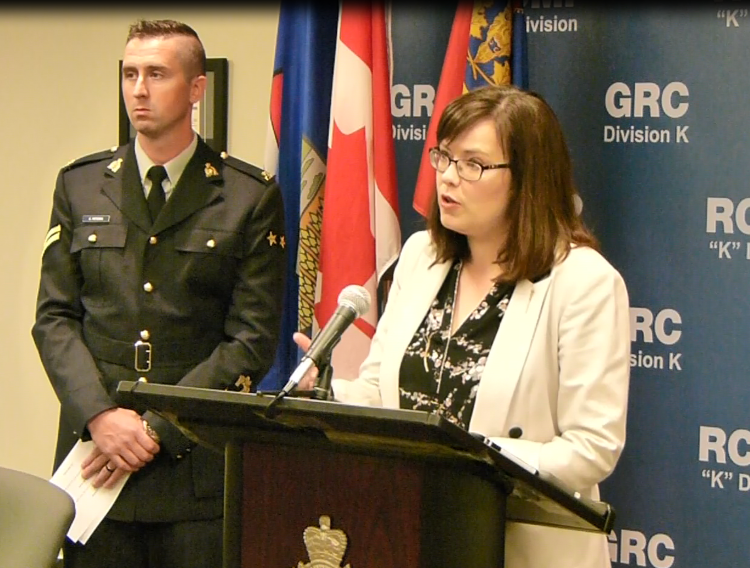Earlier today (September 4th), members of the Alberta RCMP, Alberta Crime Watch and the Provincial Government released their mid-year report from the Crime Reduction Strategy.
The report took in numbers from January to July of 2018 and compared them to the same timeframe in 2017.
Overall, the numbers are encouraging to the Police Branch, with property crimes down 9 percent overall and 11 percent in the rural communities.
RCMP say that 366 fewer homes were broken into and 648 fewer cars were stolen among other crime statistics.
Superintendent Peter Tewfik of the RCMP explains what they’ve learned over the past year with the Crime Reduction Strategy.
“It was my belief that if we focused on targetting the people that were causing us the most harm that it would have the effect of reducing crime because simply we are targetting the people that are hurting our communities the most. I think that is proving true. We know that stats can fluctuate but I think the trend is definitely going in the right direction for us.”
While the stats for the reduction in rural crime are good news, Tewfik also acknowledges that there is still work to be done, but he doesn’t encourage rural property owners to take matters into their own hands.
“At the end of the day, we want people to be safe and we’re encouraging them not to engage with a criminal that might be on their property but rather to phone us and give us an opportunity to deal with that person. That’s been the message that I’ve delivered when I’ve been out in some of our communities and these town halls.”
Alberta’s Minister of Justice and Solicitor General Kathleen Ganley also talked about the report, saying that it is working but more is being done to help with the court systems.
“The system really does function as a whole. That means that we need to keep an eye not only on efficiencies but in ensuring that every component of that system has the necessary funding.”
Ganley said that on top of the funding announced for the Crime Reduction Unit in the Spring Budget, increased funding was given to hire more court clerks and judges.









